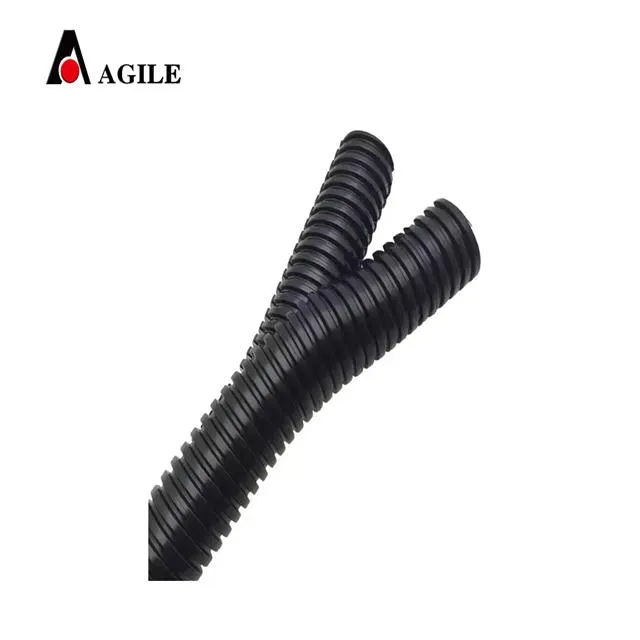enclosed cable carrier
Understanding Enclosed Cable Carriers Benefits, Applications, and Usage
Enclosed cable carriers, also known as cable tracks or drag chains, are critical components in various industrial and manufacturing applications, designed to organize and protect cables and hoses while allowing them to move freely. As industries evolve, the demand for efficient, reliable, and safe machinery increases, leading to the growing adoption of enclosed cable carriers. This article will delve into the features, benefits, applications, and considerations for using enclosed cable carriers in various settings.
What are Enclosed Cable Carriers?
Enclosed cable carriers are structured systems made of materials like plastic or metal, featuring a series of links that can bend and flex. They are designed to house electrical cables, pneumatic hoses, hydraulic lines, and other flexible conduits. Unlike traditional open cable carriers, enclosed versions offer enhanced protection from dust, debris, and physical damage, making them suitable for harsh environments.
The design typically involves a series of interlocking links that create a continuous path for the cables. These links can vary in size and shape, allowing for customization according to the specific needs of the application. Enclosed cable carriers come in different configurations, including straight, curved, and vertical designs, expanding their versatility in various settings.
Benefits of Enclosed Cable Carriers
1. Protection One of the primary advantages of enclosed cable carriers is the level of protection they provide. They shield cables and hoses from external elements, minimizing wear and tear, reducing the risk of damage, and increasing the lifespan of the equipment.
2. Organization Enclosed cable carriers keep cables neatly organized, preventing tangling and improving workflow efficiency. A tidy workspace not only enhances productivity but also facilitates easier maintenance and troubleshooting.
3. Flexibility and Mobility These carriers are designed to accommodate movement while maintaining the integrity of the cables inside. They can handle repetitive motions, bends, and twists, making them ideal for applications involving robotic arms, CNC machines, or conveyor systems.
4. Customizability Enclosed cable carriers can be tailored to specific requirements, including length, width, and the number of compartments. This adaptability allows manufacturers to optimize their designs based on the installation environment and operational needs.
5. Safety By securely containing cables and hoses, enclosed cable carriers reduce the risk of accidental disconnections or fraying, which can lead to operational hazards. Enhanced safety features contribute to a safer working environment overall.
Applications of Enclosed Cable Carriers
enclosed cable carrier

Enclosed cable carriers serve a variety of industries and applications, including
- Manufacturing Automated machinery and assembly lines utilize enclosed cable carriers to manage electrical and pneumatic lines effectively. - Robotics Robot arms and automated processes benefit from the flexibility and protection provided by cable carriers, allowing for precise and reliable movement.
- Material Handling In conveyor systems, enclosed cable carriers safeguard cables while supporting dynamic movement and transitions between sections.
- Construction Equipment Heavy machinery, such as cranes and excavators, often employs enclosed cable carriers to protect hydraulic and electrical lines from the harsh conditions of construction sites.
- Entertainment In stage productions and film sets, enclosed cable carriers are used to organize audio-visual equipment, ensuring smooth operations and quick setups.
Considerations for Implementation
When selecting enclosed cable carriers for a specific application, several factors should be taken into account
1. Environmental Conditions Assess the level of exposure to dust, moisture, and chemicals to choose materials that can withstand the operating environment.
2. Cable Type and Size Ensure that the carriers are compatible with the types and sizes of cables being used. Adequate spacing and compartment dimensions are crucial for optimal performance.
3. Load Capacity Review the weight and flexibility requirements of the cables and hoses to ensure the cable carrier can support the load without compromising its structural integrity.
4. Movement Patterns Consider the range of motion, including bends and twists, to ensure that the cable carrier can accommodate the specific application without hindrance.
In conclusion, enclosed cable carriers are essential components within modern industrial and manufacturing environments. Their ability to protect, organize, and facilitate mobility makes them indispensable for improving operational efficiency and safety. As industries continue to advance, the role of enclosed cable carriers will only become more significant, driving innovation and enhancing productivity across various sectors.








